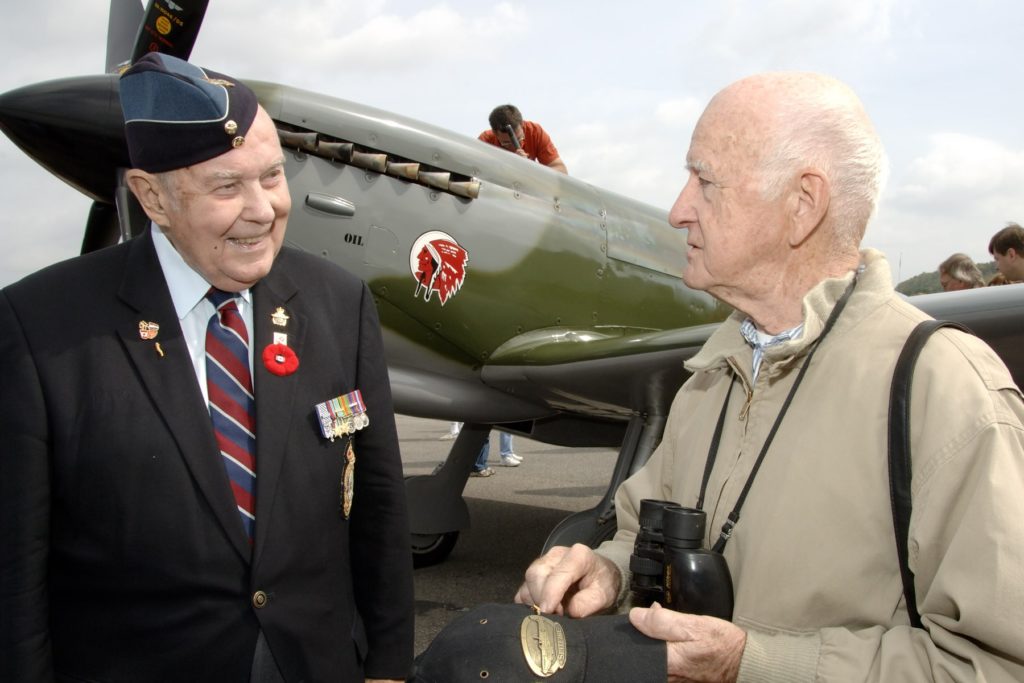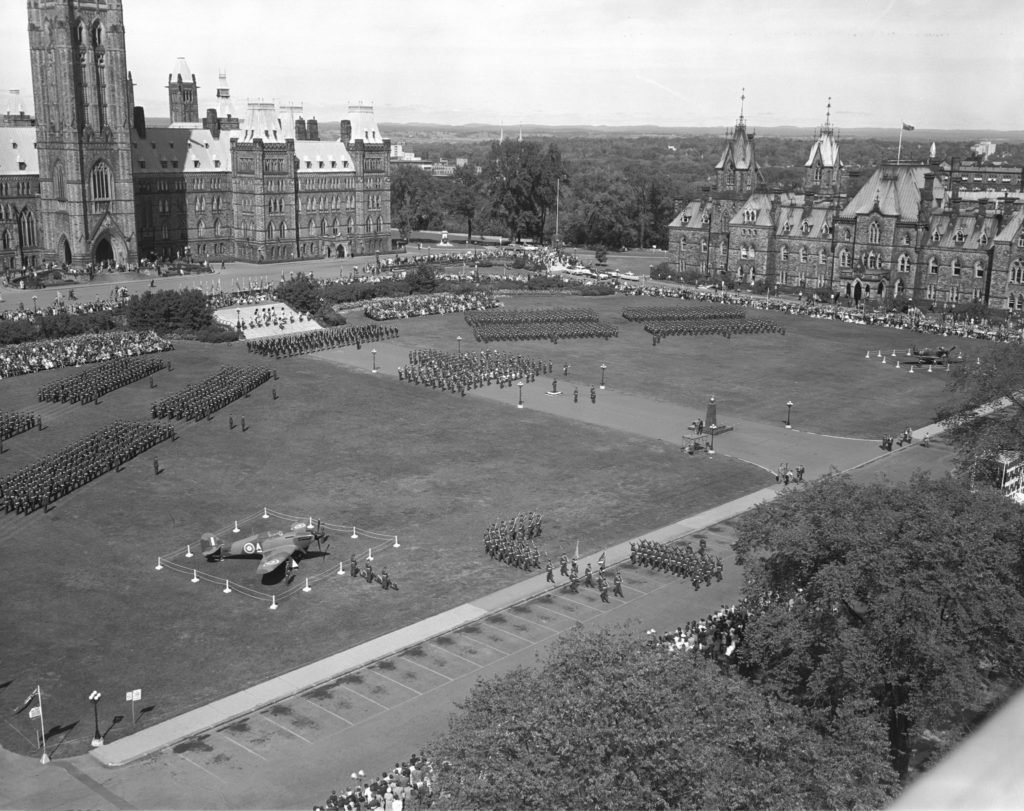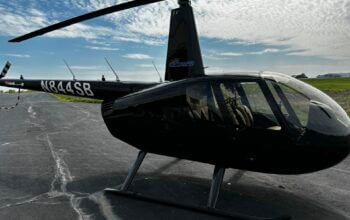Estimated reading time 7 minutes, 12 seconds.
Each year, on the third Sunday of September, the Royal Canadian Air Force (RCAF) celebrates Battle of Britain Sunday.

This tradition has gained strength in recent years, as Canadians have become more conscious of their military heritage. The almost-daily passing of Second World War veterans, the centenary of the start of the First World War, and Canadian participation in the conflict in Afghanistan have all reminded Canadians of the role that the military has played in the freedoms we enjoy. The Battle of Britain ceremony is a reminder of what young Canadians serving in both the RCAF and Royal Air Force (RAF) have contributed.
But what was the original purpose behind the ceremony, and when did it start?
The Battle of Britain was celebrated even before the Second World War had ended. Originally, it was a celebration of thanksgiving, but it was not the first such event. In March 1941, King George VI requested the Empire join him in a day of prayer for “divine favour” in the Battle of the Atlantic. Not until 1943 was there a celebration for the Battle of Britain when, in August, the King proclaimed Sept. 26 as Battle of Britain Sunday to commemorate the deeds of the RAF and civil defence workers who had participated in this pivotal battle, combining it with Civil Defence Day. The date was chosen as it fell within “the most decisive phase of the massed attacks against the United Kingdom”.

In Canada, RAF schools and units were required to hold a ceremony. The RCAF followed suit but as a suggestion and not a mandatory event. Some RCAF stations heeded the King’s request and RCAF headquarters’ suggestion, holding their own ceremonies, but many did not. On Thursday, Sept. 2 1943, RCAF Station Trenton in Ontario held a ceremony in conjunction with the commanding officer’s parade. The next year, a Battle of Britain ceremony was held on the 15th, again combined with the commanding officer’s parade. In 1945, there was no parade due to bad weather.
In the nation’s capital, RCAF Station Rockcliffe held the ceremony on Sept. 17, 1944, starting at 9 a.m. with a parade, followed by separate Protestant and Roman Catholic church services at 11 a.m. In 1945, the ceremony was again a combination parade and religious services, held this time on Sept. 14. Ceremonies were not just held at the larger stations in Canada. No. 2 Filter Detachment in Victoria, B.C., was one of several small units that held a ceremony.
In the United Kingdom, some RCAF squadrons were also to partake in the ceremony. On Sept. 16, 1944, 415 Squadron provided 60 aircrew personnel from each flight for a Battle of Britain memorial church service. However, when the squadron was detailed to go on an operation to Boulogne that night, the service was cancelled.
From these examples, it is worth noting that the Battle of Britain commemoration was one of thanksgiving, which was pursuant to King George’s request. It was also not a mandatory event; operations and training took precedence.

In 1947, the RCAF formalized the Battle of Britain ceremony, issuing Air Force Administrative Order A9/6 on June 30. It was noted, “In view of the historical significance of the Battle of Britain, the culminating engagement of which took place on 15 September 1940, and the part played by personnel of the RCAF in its victorious conclusion, the Battle of Britain is to be commemorated annually by the Royal Canadian Air Force on the Sunday following the 15 September or on that date when it falls on a Sunday”. A church service was to be held with the parade, limited to serving Regular and Auxiliary Air Force personnel, along with Air Cadets. Former members of the RCAF could arrange their own church services and were even allowed to wear their RCAF uniform on this date.
From 1947 onwards, the Battle of Britain ceremony was observed as a celebratory and religious event. At stations such as Edmonton and Calgary, it was noted in the operations orders that all RCAF officers were to attend a religious ceremony, either as part of the church parade or at a local church for those who were not on parade. After integration, those Canadian Forces bases with a primarily aviation-related operational component continued the ceremony; at others it lapsed. The church ceremony has remained a requirement in the Canadian Forces Administrative Order and continues to be observed at many bases. The new regulations have removed the service of thanksgiving.
The original focus on RCAF personnel of the Battle of Britain has also changed. Today, with Second World War veterans becoming fewer, along with the many operations in which the Air Force has participated since the Second World War, it is only natural that the Battle of Britain ceremony has become a venue at which we celebrate the contributions of all our veterans.
The Battle of Britain ceremony has become the RCAF’s day to celebrate its service to Canadians as well as its accomplishments in peace and war.








